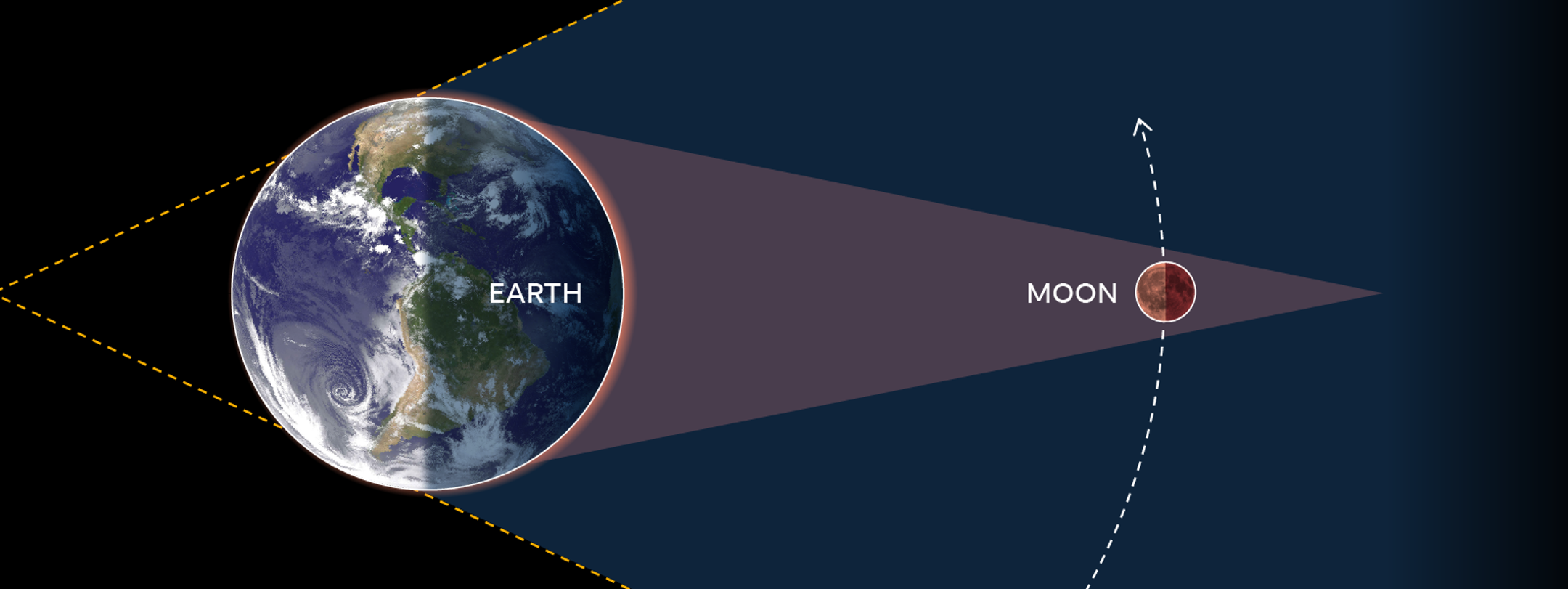
A total lunar eclipse will occur across the country early on Tuesday, November 8, astronomers say. The eclipse will last nearly 1 1/2 hours. A lunar eclipse occurs when the Sun, Earth and Moon align, so the Moon passes into the Earth's shadow. When the Moon is within the Earth's shadow, or umbra, it turns an eerie reddish hue, a blood moon.
November's full moon is traditionally known as the Beaver Moon, according to Space.com, because beavers are preparing for winter. Accordingly, this month's sky show is known as the Beaver Moon eclipse.
Here's a brief look at where and when the moon will travel during the partial eclipse:
Path the moon will follow during lunar eclipse
At the center of the umbra, 100% of the moon’s face will be covered by the Earth's dark shadow. The next total eclipse won't happen until March 14, 2025.
How the lunar eclipse happens
During a lunar eclipse, which is when the Earth lines up exactly between the moon and the sun, the moon appears darker because the Earth obscures the sun. Only light from Earth’s atmosphere reaches the moon, which can tint the moon red with light reflected from sunsets and sunrises on Earth.
Who will have the best view of eclipse?
Lunar eclipses can be visible from everywhere on the night side of the Earth, if the sky is clear, TimeandDate.com said. "From some places the entire eclipse will be visible, while in other areas the moon will rise or set during the eclipse."
According to EarthSky's Bruce McClure, if you live in the U.S., or elsewhere in North America, you can see the eclipse in the wee hours before sunrise on November 8.
Full Moon Guide: Your guide to every full moon this year.
Timetable for best views
SOURCE EarthSky.org; Space.com; NASA; USA TODAY